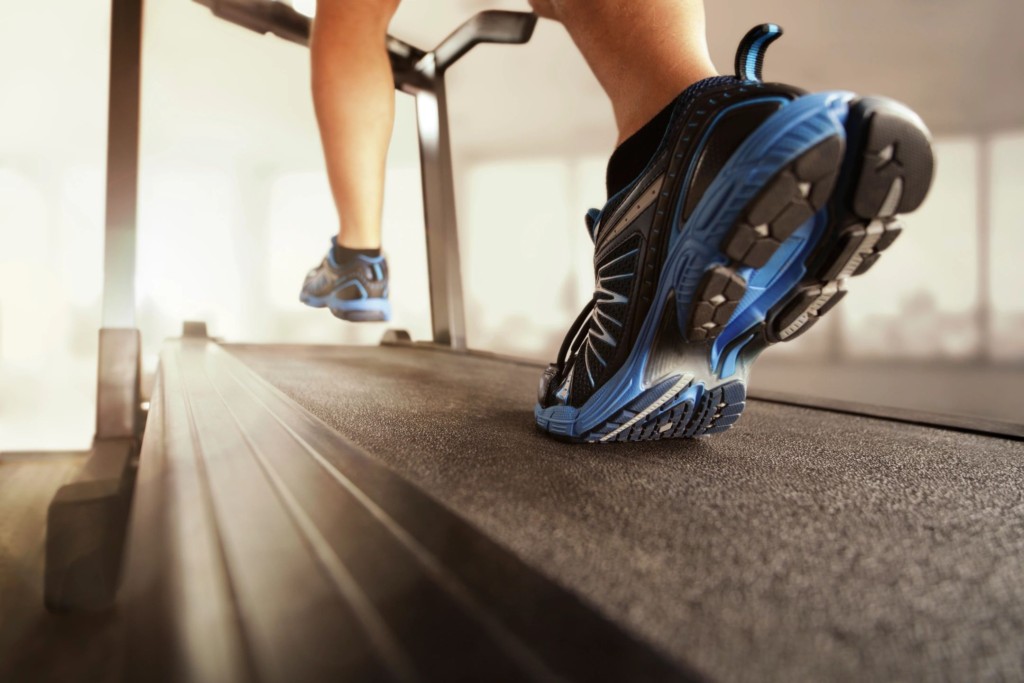The Effects of High Intensity Interval Training vs Steady State Training on Aerobic and Anaerobic Capacity
There is a substantial body of evidence in regards to the effects and side effects in varying the frequency, intensity, time and type (FIIT) of training that should be performed. The broad public health recommendation states that everyone should perform at least 30 minutes of moderate intensity exercises on most day of the week; preferably all day if possible. For those looking for enhanced outcomes, it is recommended that both large volume and high intensity training should be performed. Today, the most frequent barrier to participation in any exercises program is the person’s lack of available time. For this reason, high intensity interval training (HIIT) was created. “Indeed, Gillen et al (2014) have shown that as little as three 10 min sessions weekly, with only 3x20s high intensity, could effect both muscle oxidative capacity and several markers of cardiometabolic health” (Foster 747). One of the biggest down falls to HIIT training is that some exercisers might find the protocol to be uncomfortable which decreases the likelihood of long term adherence. In this study, physiologic responses to two HIIT programs and a steady-state program were compared and evidence was collected to determine changes in both aerobic and anaerobic exercise capacity.
A total of 65 relatively sedentary people volunteered for the following study; 23 were male and 42 were female between the ages of 18 and 28. To be eligible for the study, the participants could not have been exercising for more than 2 days per week at low-to-moderate intensity over the preceding 3 months. An incremental exercise test was performed on an electrically braked cycle ergometer in order to asses aerobic capacity. “The test began with a 5-min resting period to allow measurement of resting HR, followed by a 3-min warm up at 25W per minutes. Subjects pedaled at a cadence ~80rpm. The test was terminated when subjects were too fatigued to continue, or when the cadence fell below 60rpm” (Foster 747). Max HR was measured using radio telemetry, and rating of perceived exertion (RPE) was measured using the category ration RPE scale (0-10). Another measurement that was taken was respiratory metabolism. To measure anaerobic power, the participants performed the Wingate Anaerobic test. This test was performed on a different day to obtain accurate measurements. The Wingate test was also performed on an electronically braked cycle ergometer that was in constant torque mode. “The subjects warmed up for 5-min at 25W. In the last 5-s of the warm-up period, the subject increased their pedaling rate to >100rpm; with no resistance on the flywheel. At the beginning of the test the resistance was increased to 0.075 kg.kg-1 BW and the subject attempted to maximize their pedaling rate for the next 30s” (Foster 747). Some of the measurement recorded included the peak power output (PPO) and the mean power output (MPO). Participants were also instructed to complete the Exercise Enjoyment Scale (EES) which was administered post-, during-, and pre-training.
After the pre-testing, the participants’ exercise capacity was ranked; men and women were ranked separately. Through these rankings, subjects were separated into groups (best 3, next 3…. worst 3) and then randomly assigned to one of three training groups (stead-state, very brief, very high intensity interval training, or moderate intensity interval training). Training for all three groups was performed on the same machine as the pre-testing; pedaling rate was controlled by a metronome and the participants were supervised 1-on-1 in the laboratory by an assistant. Each group performed an identical 5-min warm-up and cool-down; “2-min at 25W, 1-min at 50W, 1-min at 75W, 1-min at 25W”
(Foster 747-745). For steady-state training, the participants performed 20-min of continuous exercise at an intensity of moderate to vigorous that resulted in a 90% VO2. The Meyer interval training consisted of 20-min of 30s work intervals which was paired with 60s of active recovery. Tabata training consisted of 20s of work paired with 10s of unloaded pedaling for a total of 4 min. During the steady-state and Meyer protocols, subjects pedaled at a cadence of 80rpm, while Tabata participants pedaled at 90rpm during the loading period. All of the participants performed 24 exercises sessions over an 8-week period. As RPE decreased by 2 or more units, the power output (PO) was increased by 10% for the next training session.
Fifty-five of the original 65 participants were able to complete the study; 17 males and 38 females. The steady-state group lost a male out of disinterest and the Tabata group lost three females, two out of disinterest and one due to an unrelated injury. As for the Meyer group, it lost 6 participants; one female due to disinterest, four males and 1 female due to unrelated injury/illness. By the end of the study, VO2max had changed significantly throughout all three of the groups; it was represented by an 18% increase across training with no difference between groups. There was also a 6-10% increase in the combined exercise capacity (CEC) with training, but again, no difference between groups. After all the data was collected, it was observed that there was no apparent advantage gained from more intense exercises for this group of participants. It was also observed that the enjoyment across all of the exercise protocols decreased. It was mentioned that “perhaps, in our quest to find the ‘perfect exercise’ we have missed the more important issue of how to make exercise enjoyable enough to be continued long term” (Foster 752). In other words, it does not depend on the protocol of the exercises as much as it depends on the enjoyment of the participant. If the participant is not enjoying the activity, than they will not see the gains that they expect to see.

 Telehealth Services
Telehealth Services Acupuncture
Acupuncture 3D Body Scanning
3D Body Scanning